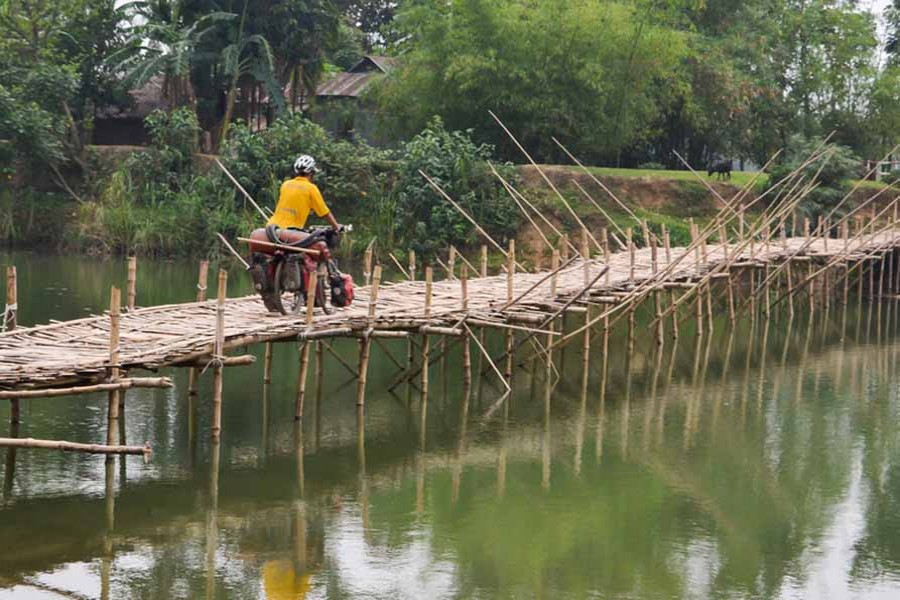In a country like Bangladesh which is weak in infrastructure, its bridges cannot be expected to remain operative flawlessly. But even upon admitting this fact, the plight of the countless rural bridges defies credulity. These days hardly a day passes when the country's one or another newspaper does not publish photographs of unusable bridges. Encountered in the country's vast rural areas, the scenario comprises rundown, flood-damaged or shabbily built bridges. A lot of them are half-done, with the contractors allegedly abandoning the projects due to inadequate funding by the authorities concerned. Allegations of misappropriating the funds granted for constructing a bridge are also rife.
The country's village people continue to suffer in scores of fields and for many reasons. Their miseries know no bounds. Apart from being affected by poor road communication, their day-to-day life remains also crippled by the absence of duly constructed bridges. The general spectacle that the country's bridges offer is highly depressing. It has been so for ages. Governments come and go; phases of development accomplished by some of them enter the nation's annals of achievements. With most of them busy giving infrastructure boosts to areas not far from the big cities, the remote stretches are compelled to make do with their rudimentary facilities. To the misfortune of rural Bangladesh, people in the villages have routinely been sidestepped. Except a few, those in the seats of administration have hardly bothered to think seriously about the basic communication needs of the rural people. Or else, how can a bridge stand without approach roads for years on end? And the surreal spectacle of a bridge in the middle of a fully dry field could be found in many rural areas. The reasons for constructing bridges in the most unlikely places are best known to the relevant authorities. In this regard, the rural folks find themselves in a quandary.
Rampant irregularities during the bridges' construction are a common blight in the country. In numerous cases, bridges develop cracks immediately after opening, posing their users at risk. But despite hazards stalking them, people have no way out except using them. Bridges across wide canals and small rivers are regularly found collapsed in the middle. Not that they have endured heavy load of vehicles for long. The caving in of concrete and iron bridges shortly after their construction is a common sight. What adds to the sufferings of the neighbourhood people is the bridges remain in their collapsed state for indefinite periods. As a stop-gap solution people are seen crossing the water bodies by rafts or ramshackle boats. If the depth of water is shallow, many wade through these rivers or canals. In spite of the great inconveniences caused to people of all ages, males can deal with the situation. It is the womenfolk, especially school-going girls, who bear the brunt. With a broken bridge made off-limits to even rickshaws or vans and light automobiles, the rural people face great difficulty commuting through it.
The load of heavy vehicles crossing the weight-limit specified for a bridge also results in its collapse. Instances of bridges breaking down due to overloading are common in the rural areas. There are no authorities in the remote countryside for monitoring the weight of vehicles passing through the bridges. Maintenance people need to be assigned the task of inspecting the village bridges, at least once a year. Villagers using bamboo-made improvised bridges beside the collapsed ones, or erecting one on self-help, thus, does not seem much unusual. In a country having vast rural swathes filled with rivers and canals, bridges occupy a dominant place in the communication infrastructure. Unfortunately, they do not receive the extent of priority they deserve.


